1990s
1990
Wirringa Baiya Aboriginal Womens Legal Centre established as an Australian Government initiative. It is a state wide service for Aboriginal women and children with a focus on domestic violence, sexual assault, child sexual assault, and other issues of violence. Wirringabaiya.org.au
1991
The urban geographer Kay Anderson reports that the dominant non-English language in Redfern is Bandjalang. Two thirds of the rate-payers are women and a significant minority are partnered to Tongan, Fijian or Torres Strait Islander men. Anderson describes Redfern as a ‘node of interconnected geographies of relating’ and not just a poor accommodation area. Nor is it a ‘depthless nomadic chaos’. (Anderson, Reflection, p. 205)
1992
The name of the University of Sydney Aboriginal Education Centre is changed to the Koori Centre to better reflect its purposes and community association. Many Koories, Goories (North Coast) and Murries (Western NSW) take on study for Aboriginal education Assistants and later some advance to Bachelor of Education (Aboriginal).
Mudgingal Aboriginal Women’s Resource Centre is incorporated from South Sydney Women’s Centre. It is operated by women including young mothers, elders, educators, family support workers, academics etc. The organisation is committed to the education of Indigenous people to combat family violence and to support families in the local area. Dixie Link Gordon is co-ordinator. (V51, ‘Turn your conversations into reality’)
Kay Anderson describes the Block as containing a number of vandalised houses, no more than shells. Alcohol and other substance abuse are more visible than in other districts as is the legacy of unemployment, boredom, truancy and disaffection among youths. Graffiti is abundant, many of the cars parking on the rough, narrow streets are defaced and many of the tenants, especially children, appear to bear symptoms of crippling poverty, inadequate nutrition, and crowded living conditions. With little money from rent coming in, the houses are left without maintenance continuing the rapid deterioration of the housing stock. The AHC is unable to keep up with repairs. (Pitts p. 3/40)
1993
Billy McPherson, actor and musician arrives in Sydney to act in Gunjies, a play by Julie Janson at Belvoir St Theatre. Lillian Crombie, Pamela Young, Lisa Kinchela, Lawrence Clifford, David Numbajarra and Kevin Smith are actors who perform in many Aboriginal themed plays. 'Dead Heart' by Nicholas Parsons in 1994 is one such production by Belvoir St Theatre in its program of Aboriginal theatre. (V22, ‘I’ve been living in Redfern for 16 years’)











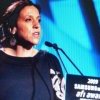
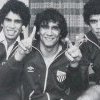

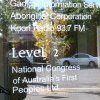

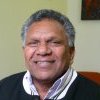
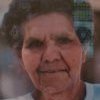
 Hall who helped found tthe AECG with Cindy Berwick.thumbnail.JPG)